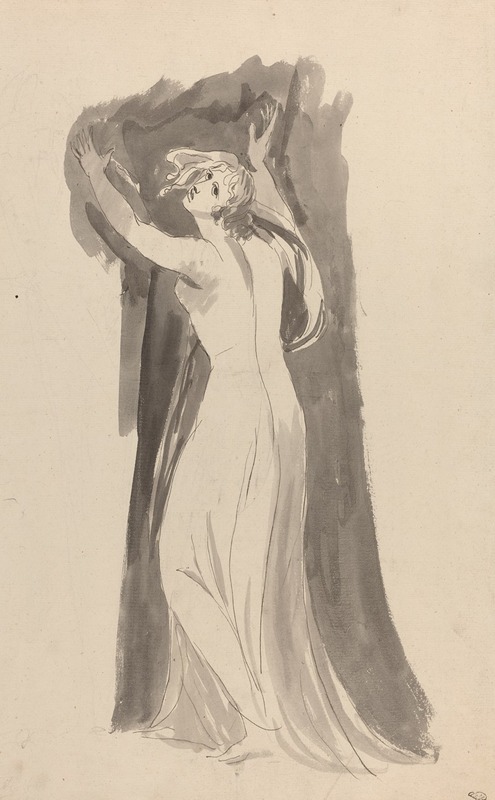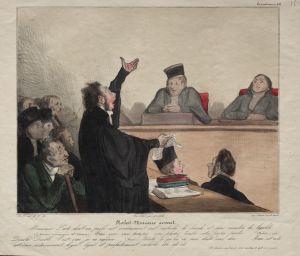
A Study of Miranda for ‘The Tempest’
A hand-painted replica of George Romney’s masterpiece A Study of Miranda for ‘The Tempest’, meticulously crafted by professional artists to capture the true essence of the original. Each piece is created with museum-quality canvas and rare mineral pigments, carefully painted by experienced artists with delicate brushstrokes and rich, layered colors to perfectly recreate the texture of the original artwork. Unlike machine-printed reproductions, this hand-painted version brings the painting to life, infused with the artist’s emotions and skill in every stroke. Whether for personal collection or home decoration, it instantly elevates the artistic atmosphere of any space.
George Romney's painting, "A Study of Miranda for ‘The Tempest’," is an evocative work that captures the essence of one of William Shakespeare's most enigmatic characters, Miranda, from his play "The Tempest." George Romney, an eminent English portrait painter, was known for his vivid and expressive style, which is evident in this particular study.
The painting is a study, meaning it was likely a preparatory work or an exploration of the character rather than a finished piece intended for public display. This type of work allowed Romney to experiment with composition, form, and emotion, capturing the nuances of Miranda's character. Miranda is the daughter of Prospero, the rightful Duke of Milan, who has been stranded on an island. Her innocence and wonder are central to the narrative of "The Tempest," and Romney's study seeks to encapsulate these qualities.
Romney's interest in Shakespearean subjects was not uncommon during his time. The late 18th century saw a resurgence of interest in Shakespeare's works, and many artists sought to capture the drama and emotion of his plays through visual art. Romney's contemporaries, such as Joshua Reynolds and Thomas Gainsborough, also engaged with literary themes, but Romney's approach was distinct in its focus on the psychological depth of his subjects.
In "A Study of Miranda," Romney employs a delicate palette and soft brushwork to convey Miranda's youthful innocence and her connection to the natural world of the island. The study likely focuses on her expression and posture, aiming to reflect her curiosity and the sense of wonder she experiences as she encounters new aspects of life and love. The painting would have been an exercise in capturing the fleeting emotions that define Miranda's character.
Romney's work is characterized by its attention to detail and the ability to convey complex emotions through subtle expressions and gestures. Although primarily known for his portraits, Romney's studies and sketches reveal his deep engagement with literary and dramatic themes. His ability to translate these themes into visual form speaks to his skill as an artist and his understanding of the human condition.
While specific details about the painting's current location or its provenance might not be widely documented, Romney's studies, including this one, contribute to the broader understanding of his oeuvre and the artistic trends of his time. They offer insight into how artists of the 18th century interpreted and engaged with literary works, particularly those of Shakespeare, whose plays have continued to inspire artists across generations.
In summary, George Romney's "A Study of Miranda for ‘The Tempest’" is a testament to the enduring appeal of Shakespeare's characters and the ability of visual art to capture the essence of literary figures. Through his study, Romney not only explores the character of Miranda but also contributes to the rich tapestry of artistic interpretations of Shakespeare's work.


















